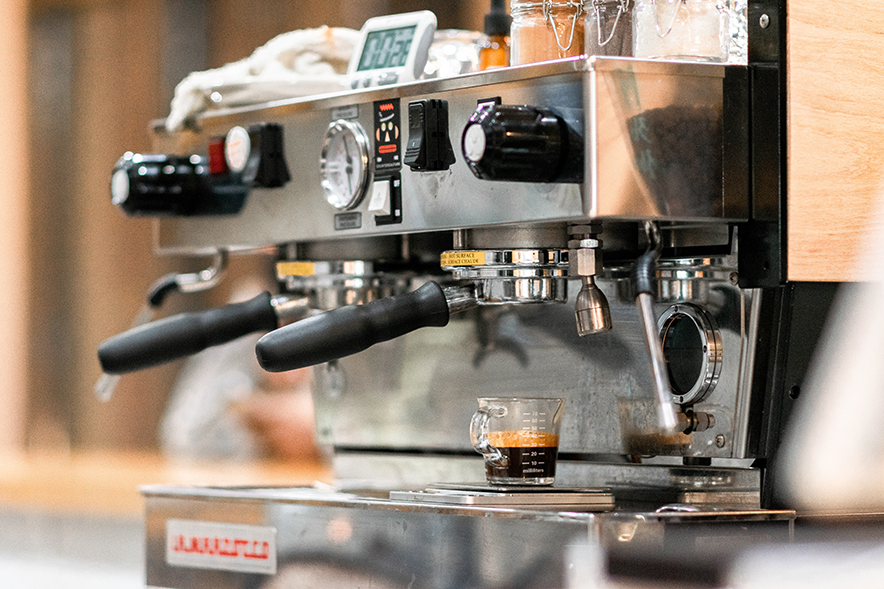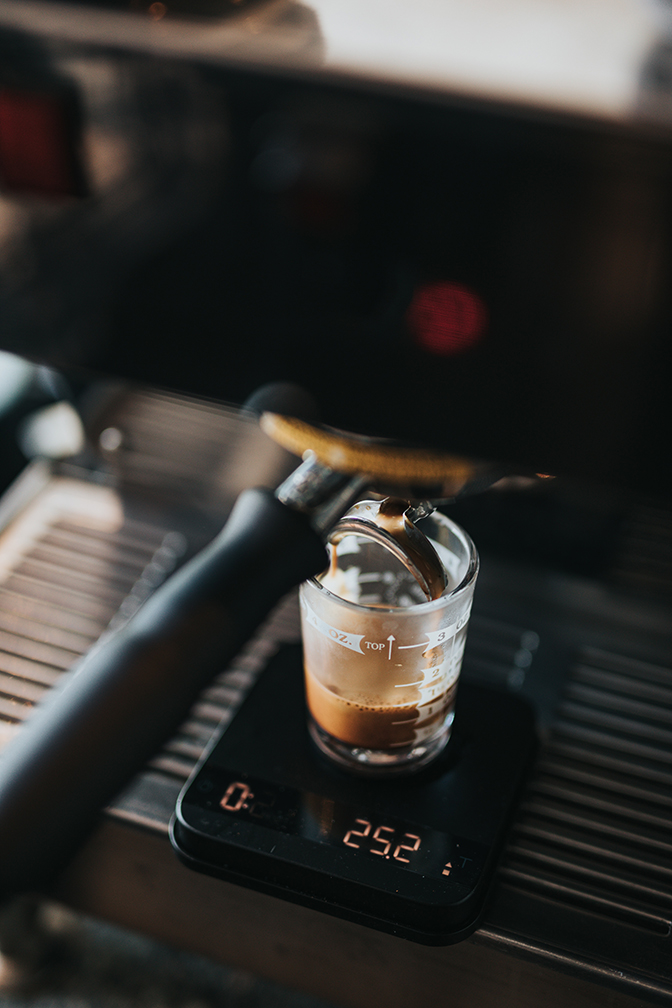The art of espresso brewing is a journey of taste, aroma, and perfection. It’s a process that transforms simple coffee beans into a rich, complex beverage that has captivated the world.
This article aims to guide you through this journey, providing you with the knowledge and techniques to master the art of espresso brewing.

History of Espresso
The story of espresso is deeply rooted in the history and culture of Europe. Originating in Italy in the early 20th century, espresso quickly became a symbol of Italian culture and lifestyle. Over time, the popularity of espresso spread across the globe, with each culture adding its unique twist to the brewing process and consumption.
Today, espresso is not just a beverage; it’s a global phenomenon that brings people together.
What is Espresso?
Espresso is a method of coffee brewing that forces a little amount of almost boiling water under pressure through finely-ground beans. The result is a very concentrated beverage with a distinctive flavor and aroma.
While it shares similarities with other coffee brewing methods, espresso stands out due to its thicker consistency, higher concentration, and crema on top. The crema, a creamy foam with a golden-brown color, is a signature characteristic of a well-brewed espresso.
The Basics of Espresso Brewing
Mastering the art of espresso brewing requires a deep understanding of its essential elements:
- Coffee Beans: The quality and type of coffee beans also play a crucial role in the flavor of your espresso. Beans intended for espresso are generally roasted to a medium or dark level to bring out the beans’ full flavor.
- Grind Size: The grind size significantly impacts the extraction process. For espresso, a fine grind is typically recommended. However, the grind size can vary based on your espresso machine and personal taste.
- Water Temperature: The water temperature is another critical factor in espresso brewing. The ideal temperature is usually between 195°F and 205°F. Too hot, and you risk over-extraction; too cold, and the espresso may be under-extracted.
- Pressure: Espresso brewing requires a significant amount of pressure, typically 9 bars. This pressure forces the water through the coffee grounds, producing a concentrated and flavorful espresso shot.
Understanding these elements and their interaction is the first step toward brewing the perfect espresso.
The Espresso Machine
The espresso machine is at the very heart of the espresso brewing process. These machines come in various types, including manual, semi-automatic, fully automatic, and super-automatic. Each type offers different levels of control over the brewing process:
- Manual Machines: These machines offer the highest level of control but require a significant amount of skill and experience to operate.
- Semi-Automatic and Fully Automatic Machines: These machines automate certain parts of the brewing process, making them a good choice for beginners and intermediate users.
- Super-Automatic Machines: These machines automate almost all aspects of the brewing process, making them easy to use but offering less control over the final product.
Choosing the suitable espresso machine depends on your skill level, budget, and how much control you want over the brewing process.

The Espresso Brewing Process
Brewing the perfect espresso is a process that requires precision, patience, and practice. Here is a mini step-by-step guide to help you achieve that perfect shot:
- Start by selecting high-quality, fresh coffee beans. Grind the beans to a fine consistency just before brewing.
- Measure the right amount of coffee grounds. A standard double shot of espresso typically requires about 18-20 grams of coffee.
- Tamp the coffee grounds evenly in the portafilter. The goal is to create a uniform surface that facilitates even extraction.
- Attach the portafilter to the espresso machine, then start the brewing process. The ideal brewing time is from 20 to 30 seconds.
- Stop the extraction once the espresso starts to ‘blonde’ or lighten in color.
Remember, practice makes perfect. Don’t be discouraged if your first few shots don’t appear as expected. With time and practice, you can pull the perfect espresso shot.
Advanced Espresso Techniques
Mastering the art of espresso brewing involves understanding and manipulating various brewing parameters. Here are some advanced techniques to help you refine your espresso brewing skills:
- Extraction Time: The extraction time refers to how long the water is in actual contact with the coffee grounds. The ideal extraction time for espresso is typically between 20-30 seconds. If your extraction time is too short or too long, it may result in under-extracted or over-extracted espresso, respectively.
- Grind Size and Dose Adjustment: The grind size and dose can significantly impact the extraction process. Use a finer grind or a larger dose if your espresso is under-extracted. Try using a coarser grind or a smaller dose if it’s over-extracted.
- Tamping: Tamping involves pressing down the coffee grounds in the portafilter to create an even surface. Proper tamping ensures the water is evenly distributed during extraction, producing a balanced and flavorful espresso.
Troubleshooting Common Espresso Issues
Even seasoned baristas encounter issues when brewing espresso. Here are some common problems and how to fix them:
- Espresso tastes sour or bitter: This could be due to under-extraction or over-extraction. Adjust your grind size and extraction time to fix this issue.
- Espresso lacks crema: This could be due to stale coffee beans, incorrect water temperature, or under-extraction. Try using fresh beans and adjusting your brewing parameters.
- Espresso needs to be stronger: This could be due to an incorrect coffee-to-water ratio. Adjust your coffee dose or water volume to achieve the desired strength.
Remember, adjusting one variable at a time is the key to troubleshooting. This way, you can identify which changes improve your espresso and which do not.
Cleaning and Maintenance of Espresso Machines
Regular cleaning and maintenance of your espresso machine are crucial to ensure its longevity and performance. Here are some basic cleaning and maintenance tips:
- Clean the portafilter and basket after each use. Rinse them under warm water and use a brush to remove any coffee residue.
- Backflush your machine regularly. It involves running water (and sometimes a special cleaning solution) through the machine to clean the internal parts.
- Descale your machine periodically. Scale buildup can affect the taste of your espresso and the performance of your machine.
- Regularly check and replace worn-out parts. It includes seals, gaskets, and filters.
Remember, a clean machine is essential for brewing delicious espresso. Regular maintenance not only improves the taste of your espresso but also extends the life of your machine.
FAQs
Here are answers to some common questions about espresso brewing:
1. What are the three elements of a good shot of espresso?
Three elements characterize an excellent shot of espresso:
- Crema: A good espresso shot should have a layer of crema on top. The crema should be thick and have a golden-brown color.
- Taste: The taste should be rich and balanced, not bitter or sour. It should also have a good body, meaning it should feel dense and strong in your mouth.
- Aroma: A good espresso should have a pleasant and strong aroma. The aroma can give you a hint of the coffee’s flavor profile, such as fruity, chocolatey, or nutty.
2. How do you master an espresso machine?
Mastering an espresso machine requires practice and an understanding of the brewing process. Start by familiarizing yourself with the machine’s functions and settings. Experiment with different grind sizes, doses, and extraction times. Keep track of what works and what doesn’t. Over time, you’ll develop a feel for the machine and the brewing process, allowing you to pull great shots of espresso consistently.
3. How do you make the perfect espresso puck?
Making the perfect espresso puck involves correct dosing and tamping. Start by dosing the right amount of coffee into your portafilter. The standard dose for a double shot of espresso is about 18-20 grams. After dosing, distribute the coffee grounds evenly in the portafilter. Then, tamp the grounds with even pressure. The goal is to create a uniform and compact coffee puck that facilitates even extraction.

Taylor – Barista and Product Tester at MyCoffeeBeanz.com
Taylor is a professional barista and our product tester here at MyCoffeeBeanz.com. She loves experimenting with different coffee brewing methods but her real passion within the coffee industry is helping promote sustainability and eco-friendliness wherever she can. Read more about Taylor her
